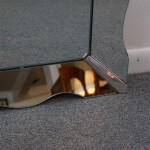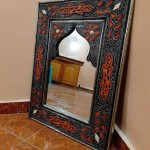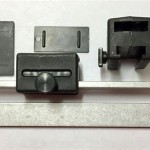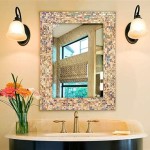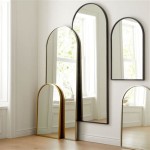Do You Need to Secure a Leaning Mirror?
Leaning mirrors, a popular choice for their minimalist aesthetic and versatility, present a unique safety concern: stability. Unlike wall-mounted mirrors, they rely on physics and friction to maintain their upright position. This raises the question of whether securing these mirrors is necessary. This article will explore the factors contributing to leaning mirror stability and provide information to help individuals assess their specific situation.
The primary forces acting on a leaning mirror are gravity and friction. Gravity pulls the mirror downwards towards the floor, while friction between the mirror's base and the floor, and potentially the wall, opposes this downward force. The balance between these forces determines the mirror's stability. A greater angle of lean increases the influence of gravity, making the mirror more prone to tipping. Conversely, a smaller angle of lean reduces the gravitational influence, enhancing stability.
The weight of the mirror plays a crucial role. Heavier mirrors possess greater inertia, meaning they are more resistant to changes in motion. This increased inertia makes them less likely to topple from minor disturbances. Lighter mirrors, on the other hand, are more susceptible to external forces and vibrations, making them more prone to falling.
The type of flooring material significantly impacts the stability of a leaning mirror. Rough surfaces like carpet offer more friction, providing a more stable base for the mirror. Smooth surfaces like hardwood or tile offer less friction, increasing the risk of slippage. The presence of rugs or mats can further influence stability, potentially adding or reducing friction depending on their material and placement.
The mirror's base design is another crucial factor. Wider bases provide a larger area of contact with the floor, increasing stability. Narrower bases offer less contact, making the mirror more susceptible to tipping. The material of the base also influences friction. Rubber or non-slip materials offer a higher friction coefficient compared to smooth wood or metal bases.
The environment surrounding the leaning mirror can impact its stability. Areas with high foot traffic, particularly in households with children or pets, present a greater risk of accidental bumps or collisions, which could dislodge a leaning mirror. Locations prone to vibrations, such as near doorways or windows, can also compromise stability.
External factors like earthquakes or strong winds, although less frequent, pose a significant threat to unsecured leaning mirrors. These events can generate enough force to topple even relatively stable mirrors, potentially causing damage and injury.
Several methods exist to secure leaning mirrors. Wall anchors, straps, and specialized anti-tip hardware can be used to tether the mirror to the wall, significantly reducing the risk of tipping. Non-slip pads placed under the base of the mirror can enhance friction, improving stability on smooth surfaces. Positioning the mirror against a wall at a slight angle also increases stability by providing additional support.
Assessing the necessity of securing a leaning mirror requires careful consideration of the factors outlined above. A heavy mirror with a wide base positioned on a carpeted surface in a low-traffic area may not require additional securing. However, a light mirror with a narrow base on a smooth surface in a high-traffic area would significantly benefit from added security measures.
Regularly inspecting the mirror's stability is essential. Checking for any wobbling or looseness can help identify potential issues before they escalate. Ensuring the mirror's base remains clean and free from debris also contributes to maintaining stability by maximizing friction with the floor.
While leaning mirrors offer a stylish and versatile design element, their inherent stability issues should not be overlooked. By understanding the factors influencing stability and implementing appropriate safety measures, individuals can enjoy the aesthetic benefits of leaning mirrors while minimizing the risks associated with their use.
Ultimately, the decision of whether or not to secure a leaning mirror rests on individual circumstances. Evaluating the specific characteristics of the mirror, its placement, and the surrounding environment will inform the best course of action to ensure safety and prevent accidents.
Resources such as manufacturer guidelines, product reviews, and online tutorials can provide additional information on securing leaning mirrors. Consulting with a professional handyman can offer personalized advice tailored to specific needs and circumstances.

Need Ideas About How To Secure A Leaning Mirror Without Using S R Askdiy

How To Secure A Heavy Leaning Floor Mirror The Wall Home Interior Accessories Furniture Straps

How To Secure A Leaning Mirror The Wall Diy Playbook

How To Secure A Heavy Leaning Floor Mirror The Wall Love Our Real Life

How To Install Your Leaning Mirror

How To Secure A Leaning Mirror The Wall Diy Playbook Large Standing

How To Secure A Heavy Leaning Floor Mirror The Wall Love Our Real Life

Leaning Pictures And Mirrors The Easy Alternative To Hanging Art

How To Secure A Leaning Mirror Wall Hunker

The Perfect Leaning Mirror April 2024 Your Guide To 9 And Floor Mirrors


